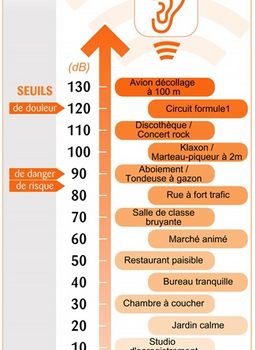
Larisa Inès Yankoty
Credit: Photo de courtoisie
Every 10-decibel (dBA) increase in outdoor noise raises the risk of stroke by 6% for people aged 45 and over living in the Montreal area.
That is the finding of a study published a few months ago in the journal Noise & Health. The longitudinal study was conducted by doctoral student Larisa Inès Yankoty, under the supervision of professor Audrey Smargiassi of the University of Montreal's School of Public Health (ESPUM).
Administrative health data on a cohort of nearly 1.1 million people living on the Island of Montreal for the years 2000 to 2014 were crossed with noise measurements recorded by approximately 200 sound level meters across the island during the same period. The noise data compiled by Smargiassi's team are now available through CANUE ,a Canadian research consortium.
"A number of studies, largely in Europe, have shown that noise has a deleterious effect on cardiovascular health," said Inès Yankoty. "Some have established a link between noise pollution and the incidence of myocardial infarction." However, she noted, the current study is one of the few to draw a connection between noise and the incidence of stroke.
Stronger association for ischemic stroke
During the period studied, more than 25,000 people were hospitalized for stroke on the Island of Montreal, or 2.5% of the population aged 45 and over.
There were more than five times as many ischemic strokes (more than 21,000) as hemorrhagic strokes (4,000). Ischemic strokes occur when a blood clot blocks a blood vessel in the brain, whereas in a hemorrhagic stroke a blood vessel in the skull ruptures.
On the Island of Montreal, ambient noise is highest around busy roads; the findings therefore suggest that people living in the vicinity of major arteries are at higher risk of stroke.
"Bear in mind that we're talking about an association between noise and the risk of ischemic stroke, not a cause-effect relationship," Smargiassi pointed out. "Our statistical analyses are imperfect and we cannot conclude that a stroke is specifically due to ambient noise."
This study complements an international report published in June by the Health Effects Institute, which reviewed 353 scientific articles published between 1980 and 2019 on the health effects of traffic-related air pollution. Smargiassi was one of the authors.
What do the decibel numbers mean?
Studies have found that noise above 40 dBA at night and 55 dBA during the day can cause fatigue, stress, sleep or mood disorders and cardiovascular problems.
Chronic exposure to noise between 85 and 105 dBA poses a long-term risk of hearing loss. At 105 dBA and above, there is an immediate risk of tinnitus or even deafness.








